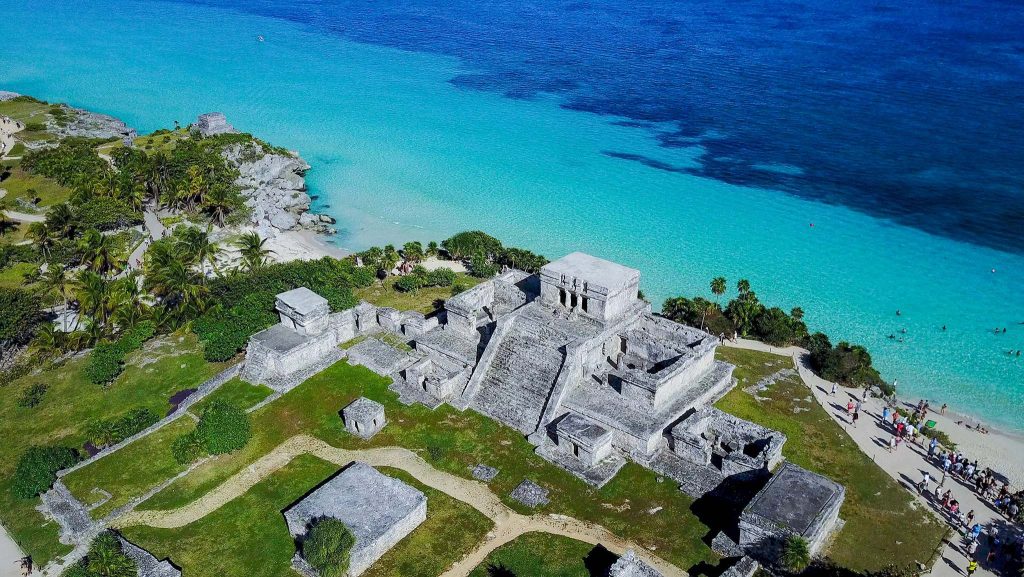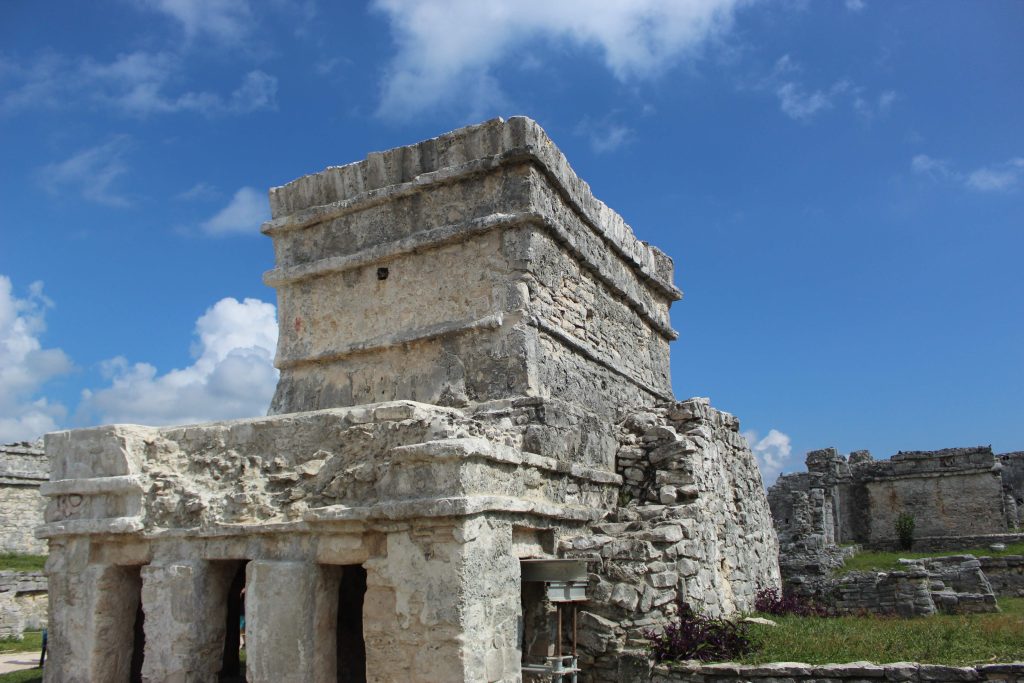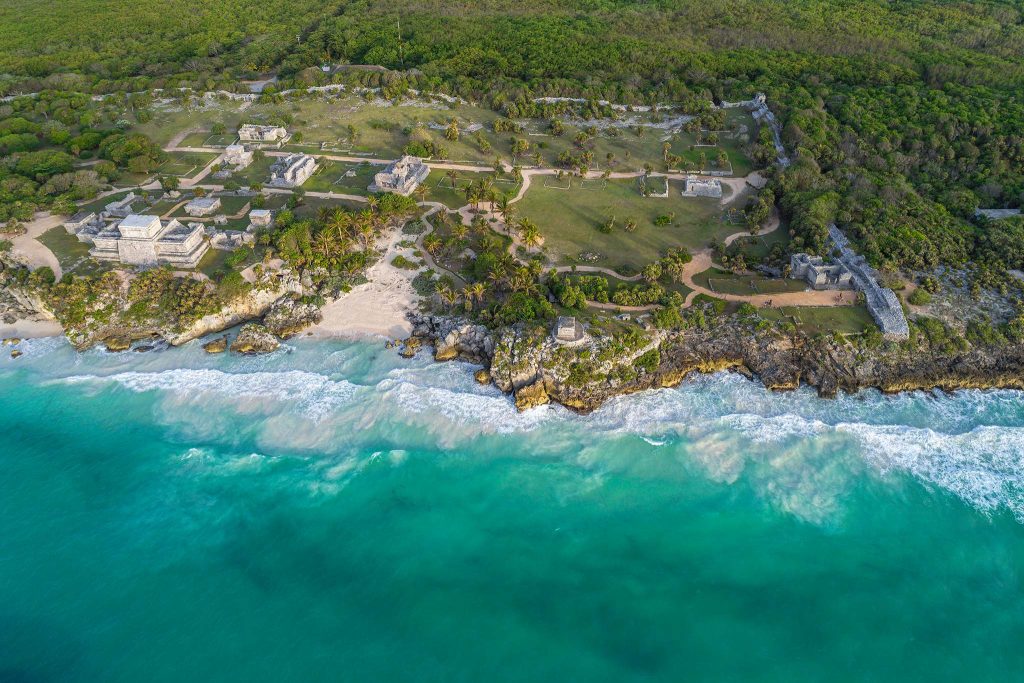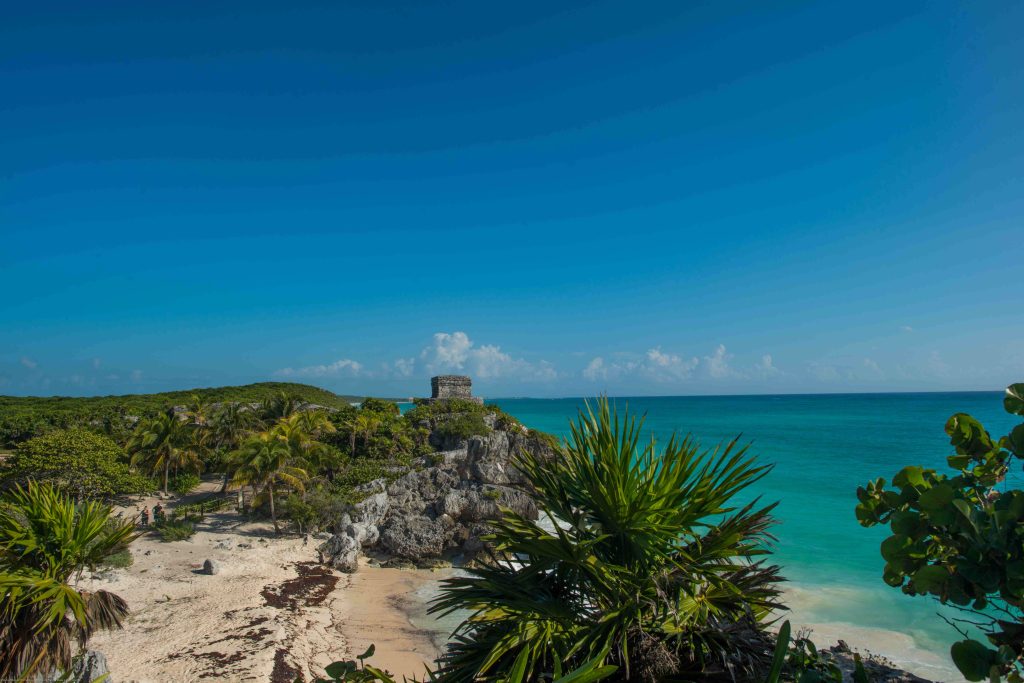Discover the Archaeological Sites of Tulum
Tulum is one of Mexico’s most captivating destinations, not only for its dreamlike beaches but also for its rich history as an ancient Maya city. The Tulum Archaeological Site are unique because they are located on a stunning cliff overlooking the Caribbean Sea, making them one of the most photographed archaeological sites in the world. In this article, we’ll share everything you need to know to discover the history and secrets of this incredible place.
1. The archaeological site of Tulum : An Ancient Maya Port
The archaeological site of Tulum was one of the last cities built and inhabited by the Mayans, reaching its peak between the 13th and 15th centuries. Tulum was an important commercial port, key to the exchange of goods along the Caribbean coast, and its strategic location atop a cliff allowed the Mayans to control maritime trade.
The name “Tulum,” meaning “wall” in Maya, refers to the wall that surrounds the complex. The city was one of the few walled Maya settlements, making it a unique place.

2. The Temple of the Descending God: A Divine Enigma
One of the most iconic structures in the Tulum vestiges is the Temple of the Descending God, located at the top of a cliff. This temple stands out for a relief sculpture depicting a god descending headfirst, an enigmatic image that archaeologists believe is related to deities associated with fertility or bees, both important in Maya cosmology.
• What to see: Observe the Descending God sculpture up close and enjoy the breathtaking views of the Caribbean Sea from the top of the temple.
• Fun fact: This temple faces west, unlike many other Mayan structures that face east, sparking various theories about its astronomical or ritual significance.
3. El Castillo: The Jewel of Tulum
The most imposing and famous building at the archaeological site is El Castillo, which dominates the landscape from the edge of the cliff. This temple was used both as a lighthouse for sailors and as a ceremonial center. The Mayans would light fires at the top of El Castillo to guide boats through the reef that protected the coast.
• What to see: The structure of El Castillo is impressive due to its size and location, offering unparalleled views of the ocean. Don’t miss the facade decorated with Maya masks and reliefs.
• Tip: Climb the small hill in front of El Castillo for a panoramic view of the entire complex and the beach below.

4. The Temple of the Frescoes: A Glimpse into Maya Art
The Temple of the Frescoes is one of the most fascinating structures in Tulum, known for its intricate murals that have survived the passage of time. This building was used as an observatory to track the movements of the sun and moon. The paintings that adorn the interior and exterior of the temple depict gods and scenes from Maya daily life.
• What to see: While you can’t enter the temple, from the outside you can admire the murals of divine figures and mythological beings, as well as the architectural details typical of Tulum’s Maya style.
• Tip: Pay attention to the sculptures on the temple’s corners, especially the figures of the goddess Ixchel, associated with fertility and medicine.
5. The Tulum Wall: Archaeological Sites of Tulum
The wall that surrounds the ancient city of Tulum is one of the most distinctive features of the archaeological site. This wall, built to protect the city from potential invaders, extends along three sides, while the fourth side is protected by the Caribbean Sea. The wall measures approximately 400 meters in length and up to 5 meters in height at some points.
• What to see: As you walk through the site, you can observe well-preserved sections of the wall that once enclosed the city. The three main entrances provided access to Mayan elites and merchants arriving by land.
• Tip: Take a moment to imagine what life was like inside this walled city, with its inhabitants relying on maritime trade and agriculture.

6. Playa Ruinas: Nature and Archaeology Combined
Below the vestiges lies a small beach known as Playa Ruinas, where visitors can swim in the crystal-clear Caribbean waters while enjoying unique views of the Maya structures perched on the cliff. This beach is not only beautiful but also offers an incomparable experience by combining history with nature.
• What to do: After exploring the vestiges, descend the staircase to the beach and enjoy a refreshing swim with one of the best archaeological views in the world.
• Tip: Bring a swimsuit and towel if you plan to take a dip. It’s a unique opportunity to combine culture and relaxation.
Tips for Visiting the Tulum vestiges
• Arrive early: The Tulum vestiges can quickly become crowded, especially during peak season. Arrive early in the morning to avoid the crowds and enjoy the views more peacefully.
• Sun protection: Since many areas of the site lack shade, be sure to bring sunscreen, a hat, and water to stay hydrated during your visit.
• Guided tours: Consider taking a guided tour to learn more about the history and symbolism of the buildings. Local guides offer an interesting perspective on Maya life and the meaning of the vestiges.

The Tulum archaeological sites offer a unique window into the Maya past, combining history and archaeology in a spectacular natural setting. The ancient walled city, with its temples overlooking the Caribbean Sea, is a reminder of the grandeur of the Maya civilization and its connection to trade and nature. If you find yourself in the Riviera Maya, you can’t miss the opportunity to explore this fascinating archaeological site and immerse yourself in its history. Tulum is a place where history and natural beauty come together to offer an unforgettable experience!
